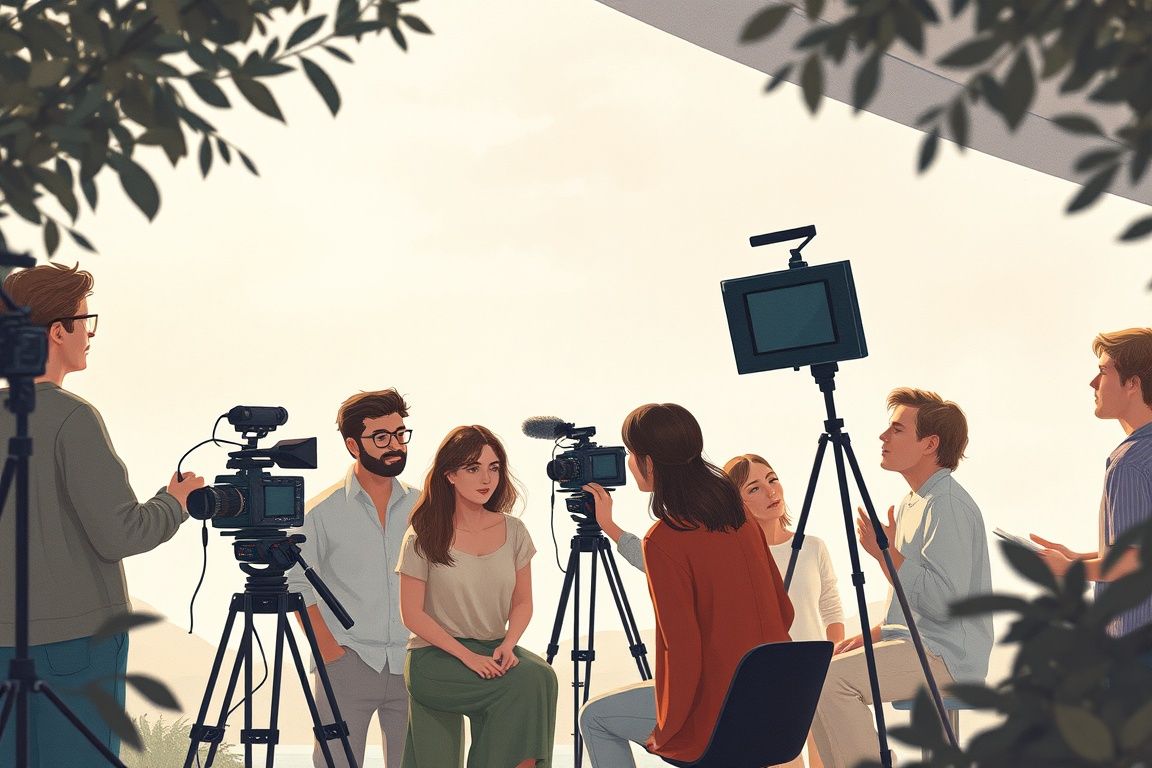Composition and Framing in Cinematography
Why It’s Worth It
Master the visual language of film to improve your storytelling abilities and creative expression.
Gain practical skills that can be directly applied to your projects and elevate your filmmaking techniques.
Understand emotional and psychological aspects of framing, lighting, and color to better connect with your audience.
Your Learning Roadmap
Fundamentals of Composition
This module lays the groundwork for understanding visual storytelling in film. Learners will explore key composition elements, learn how these principles affect viewer perception, and understand the role of visual balance in narrative structure. The knowledge will be supported by insights from popular texts, including The Visual Story and Film Art. Introduction to Cinematic Language Elements of Visual Composition Psychological Impact of Visual Storytelling
Framing Techniques
This module delves into the art of framing, examining how cinematographers decide what to include in a shot. Learners will investigate framing rules, such as the rule of thirds and the golden ratio, and analyze films to see these principles in action. Emphasis is placed on how framing can enhance narrative depth and guide audience focus. Principles of Framing Rule of Thirds and Golden Ratio Practical Analysis of Film Frames
Lighting and Mood
This module highlights the critical role of lighting in cinematography. Participants will explore different lighting setups and their emotional effects on viewers. The module integrates theory from Cinematography: Theory and Practice with practical case studies to illustrate varied lighting techniques. Lighting Basics and Types Lighting and Emotional Tone Techniques in Cinematographic Lighting
Color Theory in Cinematography
This module examines color theory and its significant impact on film narratives. Learners will study how color influences mood, tone, and symbolism on screen. Drawing from Film Art and other resources, the module provides both theoretical frameworks and practical analysis of color in cinematography. Color Psychology in Film Balancing Colors for Mood Case Studies in Color Use
Camera Angles and Movement
This module focuses on the dynamic aspect of cinematography through the study of camera angles and movements. Participants will learn how different angles influence viewer perception and narrative emphasis. The lessons provide both theoretical insight and practical examples from notable films to enhance visual storytelling. Understanding Camera Angles Dynamic Camera Movements Impact on Storytelling
Advanced Composition Techniques
The final module challenges learners to synthesize knowledge from previous modules into advanced composition strategies. It emphasizes symbolic composition, metaphorical framing, and the integration of multiple visual elements. Students will gain expertise in critiquing and creating scenes that are both artistically and narratively robust. Integrating Composition with Narrative Symbolic Composition and Metaphors Analyzing Iconic Film Scenes
What Users Are Saying
All You Need to Know
Enroll in Cinematography Now
Engage with an AI tutor in real time for instant feedback
Learn at your own pace with flexible access
Practical applications to reinforce your learning
Explore famous film scenes to enhance understanding
Get personalized advice on your projects
Dive deep into advanced techniques for cinematic excellence

